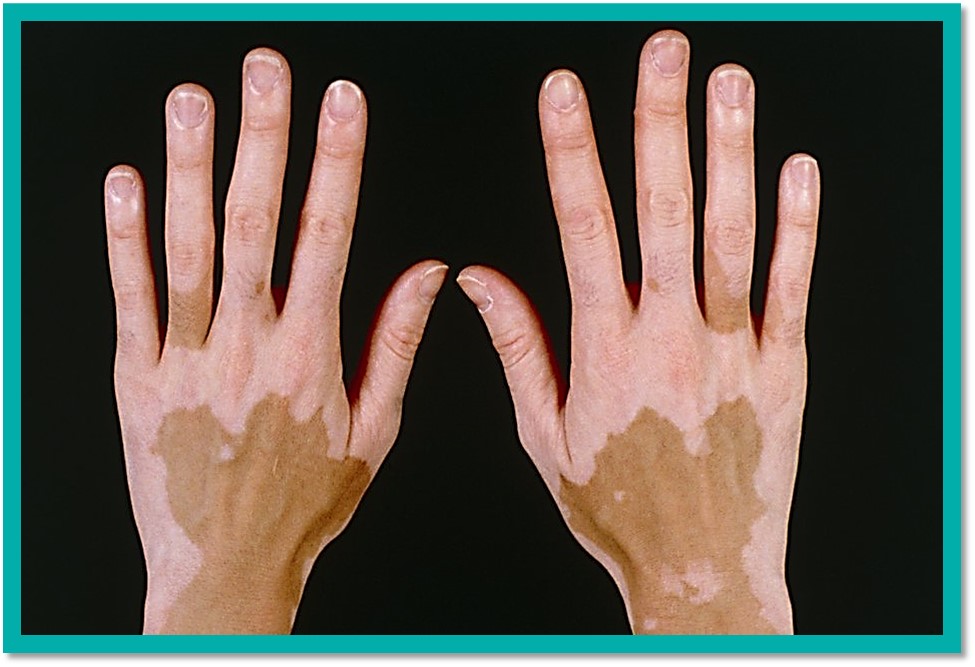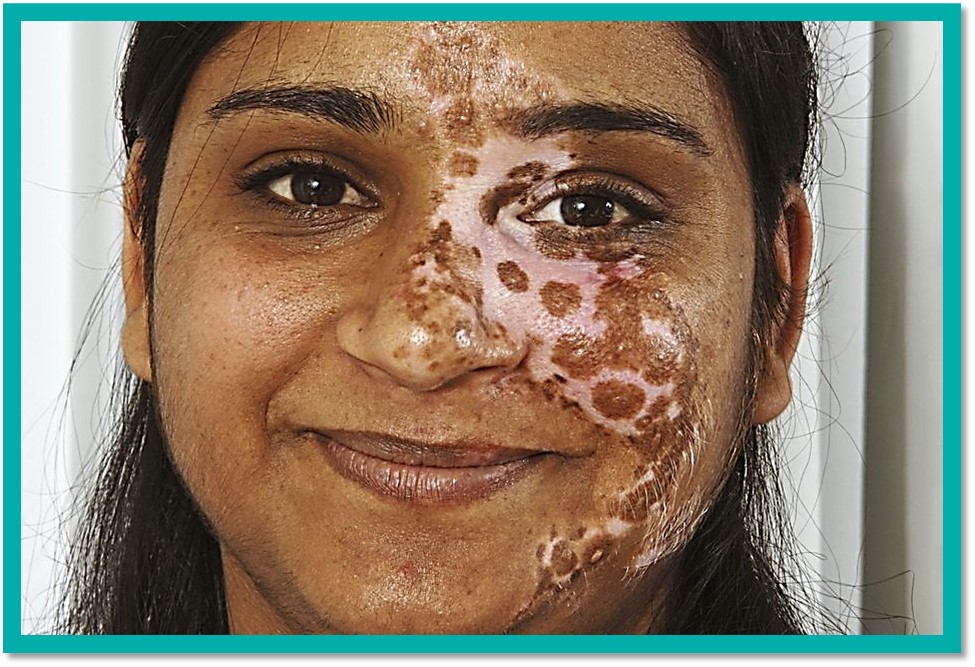NON-SEGMENTAL VITILIGO
(also known as bilateral vitiligo, vitiligo vulgaris, and generalized vitiligo). This is the most common type of vitiligo and results in white patches appearing on both sides of the body. Usually it starts near the hands, around the eyes or mouth, on the feet, or in an area of the body where the skin rubs together frequently. With nonsegmental vitiligo, color loss comes in spurts over the course of one’s life, spreading and becoming more noticeable as time goes on.

